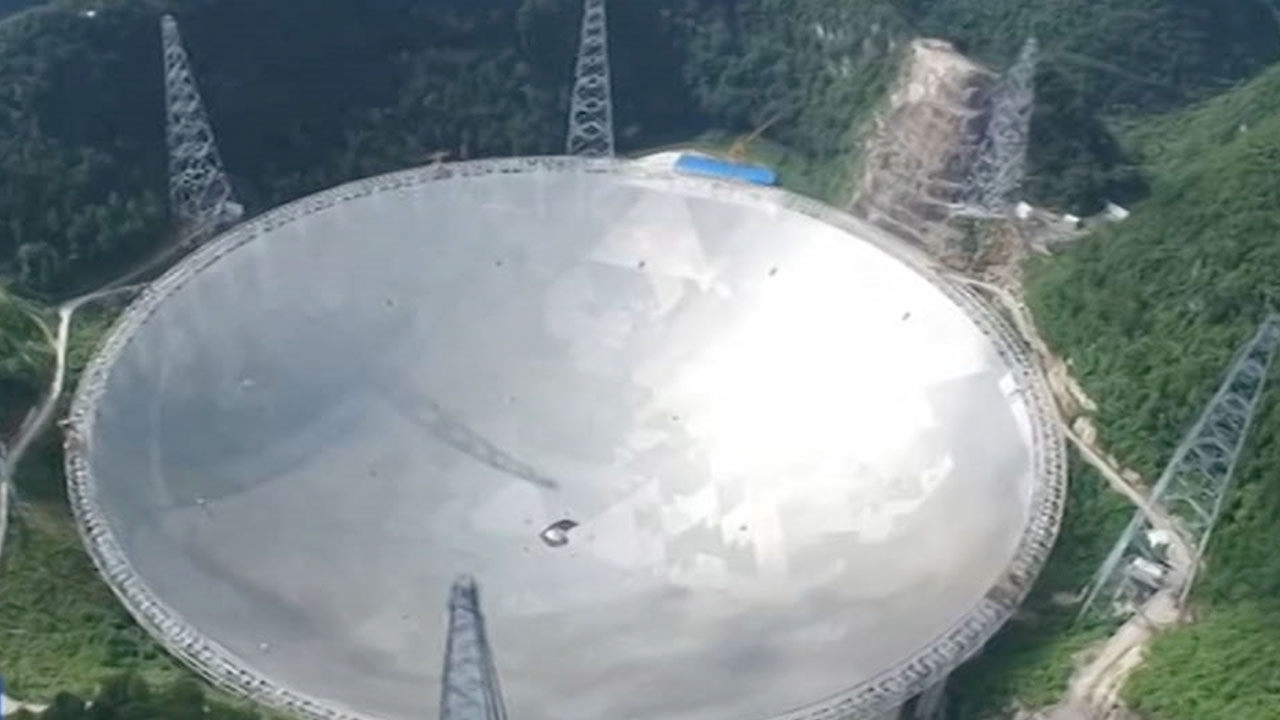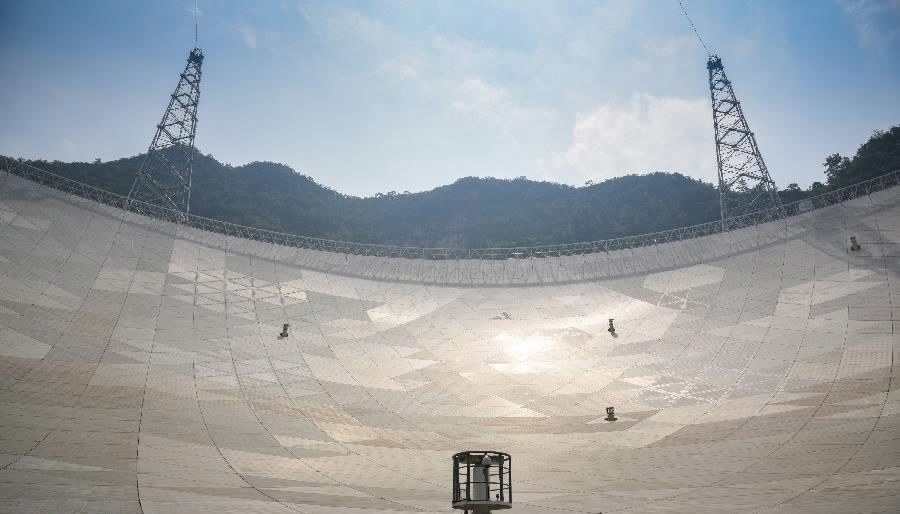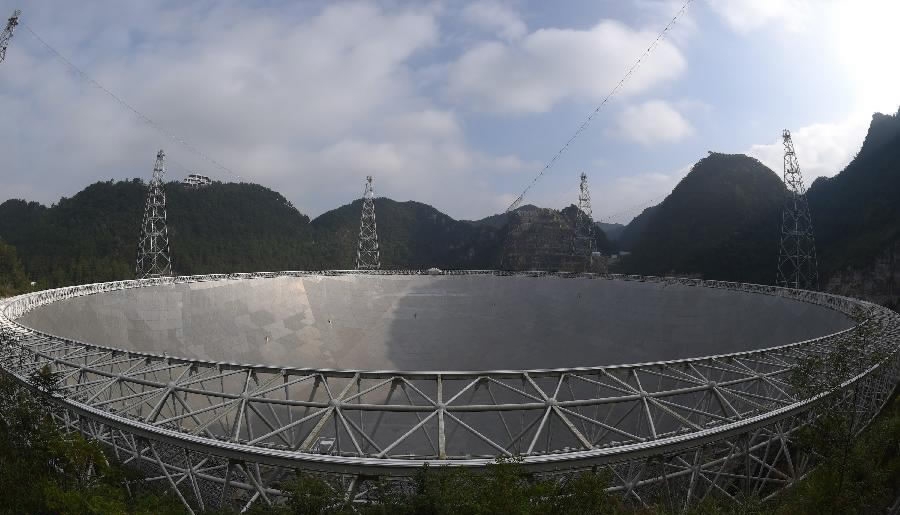
Tech & Sci
15:58, 25-Sep-2017
FAST telescope: A year of unprecedented spying on the skies
BY CGTN’s Wang Mengzhen

After spending 22 years in development, the world's largest radio telescope began operations and is now celebrating its first birthday.
The immense telescope is located in southwest China’s Guizhou Province and is called FAST, which stands for Five-hundred-meter Aperture Spherical Radio Telescope. It enables astronomers to detect weaker and more distant messages from the universe than ever before.
So what has FAST done in its first year? CGTN had a special opportunity to have a close look at the site.

Reflector panels of FAST /Xinhua Photo
Reflector panels of FAST /Xinhua Photo
It's early morning, and scientists have already started to analyze observation data from the night before. The 78-year-old veteran scientist Carl Heiles travels all the way from the state of California in the US every six months.
Each time he visits, he can't believe the tremendous progress FAST has made.
"Last year, we started to get the first observation, but we could not point and we had to directly look at the sky. That's a big problem for a telescope. Then about six weeks ago, all of a sudden, the point started to work through the efforts of all kinds of people. So, it's fabulous," Heiles said.
After one year of trial operation, FAST, in a deep valley far from cities, is still unknown to many. The idea was first proposed in 1994, then took 13 years for scientists to choose 13 possible locations.

View of FAST /Xinhua Photo
View of FAST /Xinhua Photo
And the naturally-formed karst area in Pingtang County of Guizhou was at the top of the list. FAST's key technical parts are the feed cabin, 4,600 triangular panels and the active reflector.
The dish has a receiving area the size of 30 soccer pitches, and it's 10 times as sensitive as the Arecibo telescope in Puerto Rico that was damaged by Hurricane Maria. Scientists are able to survey hydrogen in the Milky Way and other galaxies, detect thousands of new pulsars and seek out the origin and evolution of the universe.
During the early commissioning, scientists had to expect the unexpected, most of which came from the natural world.
Peng Bo, deputy director of the FAST project, said that one of the worst setbacks came when a one-ton rock fell onto one of the structure’s cables and damaged six of its panels. “It took us one month to recover,” Peng said.

CGTN infographic
CGTN infographic
The world's largest radio telescope cost 1.2 billion yuan (182 million dollars). Since it began operating, it has attracted 240,000 tourists to the area. But is a boom in tourism compatible with the telescope's research function?
The local government has set up a radio quiet zone of 5 kilometers to protect FAST. Tourists are not allowed to bring phones and cameras into this zone as they would produce electromagnetic waves.
Peng Bo says RFI-Radio Frequency Interference is the dish's main enemy. “If you bring a cellphone with you, it will damage our detector, and it takes a lot of effort to recover it. This happened once already,” said a senior scientist.
After its construction was completed on September 25, 2016, FAST began a debugging process that will continue until it is able to work at full capacity. That process normally takes three to five years, but scientists say they are doing everything they can to shorten the period.
1818km

SITEMAP
Copyright © 2018 CGTN. Beijing ICP prepared NO.16065310-3
Copyright © 2018 CGTN. Beijing ICP prepared NO.16065310-3